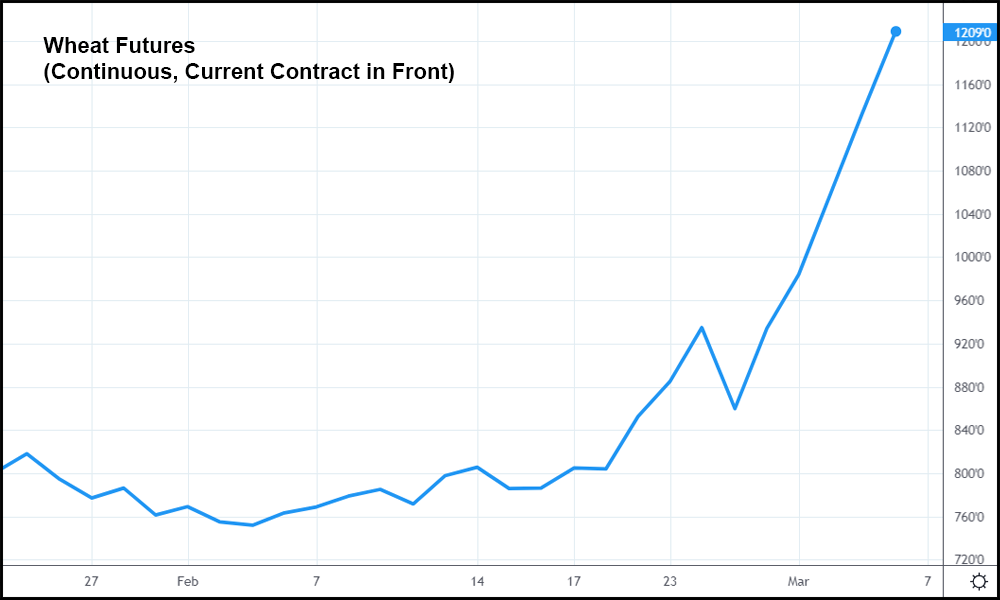Stocks sunk this morning despite a stronger-than-expected jobs report, which took a backseat to the war in Ukraine. Investors shirked at the 678,000 payroll gain that blew away the consensus estimate (+423,000). In addition, the February jobs “beat” was likely interpreted as fodder for the Fed to go with a stronger rate hike in a few weeks.
“The labor market recovery remains very robust across the board as more Americans are returning to work,” explained Eric Merlis, managing director of global markets at Citizens Financial Group.
“Geopolitical issues and inflation pose ongoing threats to the U.S. economic recovery, but pandemic restrictions are being lifted and we continue to see strong job growth.”
Yesterday, Fed Chairman Jerome Powell didn’t do bulls any favors, either, when he commented on the upcoming FOMC meeting.
“Hindsight says we should have moved earlier,” Powell said.
“We’re going to use our tools and we’re going to get this done.”
Anyone paying attention knew that the Fed needed to start the tightening process months ago, if not further back than that. Now, with a bevy of sanctions levied against Russia (one of the world’s top producers of natural resources) the inflation problem could become potentially catastrophic.
There’s perhaps no better example of this than wheat futures, which surged almost 50% over the last 2 weeks. Most investors missed this as oil stole the show.

Combined, Russia and Ukraine export roughly 25% of the world’s wheat. The war threatened to reduce production all on its own. This morning, however, in response to sanctions against Russia, the Russian government took things one step further by recommending that fertilizer makers halt all exports. That drove wheat futures even higher, as Russia is currently the world’s fourth-largest exporter of fertilizer. China, Russia’s closest ally at the moment, is the top fertilizer exporter.
If China follows suit, the wheat rally could go even more parabolic. That doesn’t mean Russian fertilizer manufacturers will actually halt exports, though. For the time being, the Russian government is only recommending that exports stop. It isn’t forcing these manufacturers to do so.
But things could change as additional sanctions against Russia roll in. Just yesterday, White House Press Secretary Jen Psaki was grilled by reporters on whether the US would attempt to hit Russia with oil sanctions.
Psaki’s reply suggested the US might pivot away from Russian oil, but she made no mention of actual sanctions.
“There’s a policy process that is undergone for any decision that is made,” Psaki said.
“Sometimes those move rapidly and often there [is] a range of factors that are discussed as those decisions are made.”
One of those factors is likely the sky-high price of oil, which tagged a 13-year high yesterday at $116.51. Sanctions against Russian oil would undoubtedly cause WTI crude prices to climb further.
The question now is what effect the ongoing war will have on stocks. After it looked like a rally was on its way earlier in the week, a deeper correction seems more likely as of this morning. Russia’s progress in Ukraine has been slow, and with casualties mounting, additional sanctions may soon arrive.
Simply put, the Fed is in an even more impossible position than before because of this. And if things get worse in Ukraine, a weaker-than-expected rate hike might not be able to save equities from a bear market.
That’s worst-case scenario thinking, of course, but it’s something that must be considered by investors, most of whom have grown extremely complacent during the post-Covid bull run.
Which, following the geopolitical developments of the last week, might finally be over.








